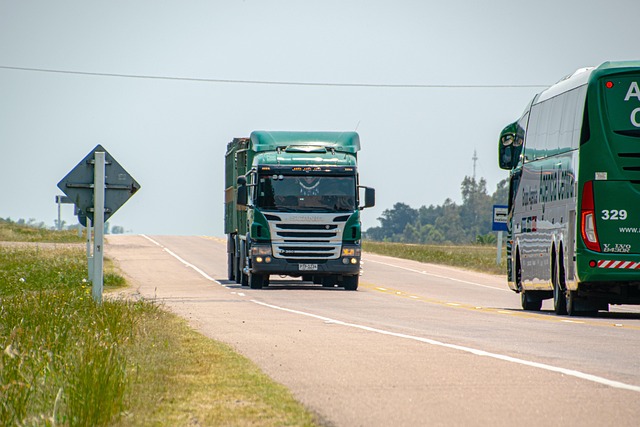Looking to register your car in California? This comprehensive guide walks you through every step, from understanding the registration process to submitting applications and paying fees. We’ll also cover the importance of a VIN verifier in California, ensuring your vehicle’s history is accurately checked. Prepare necessary documents, know post-registration requirements, and explore tips for a smooth experience.
- Understanding the Registration Process
- Preparing Necessary Documents
- Using VIN Verifier in California
- Submitting Applications and Paying Fees
- Post-Registration Requirements and Tips
Understanding the Registration Process

Understanding the Registration Process in California
Registering a car in California involves several key steps that ensure vehicle safety and compliance with state regulations. The process begins with gathering essential documents, including proof of ownership, valid identification, and insurance information. Once these are in order, the next step is to obtain a Vehicle Identification Number (VIN) verification from an approved source, such as a local DMV office or through a mobile VIN inspection service. This critical step ensures that your vehicle’s details match the provided records.
After successful VIN verification, you can proceed with scheduling or conducting a safety inspection. This inspection checks various components of your vehicle to ensure it meets California’s safety standards. Upon passing the inspection, you’ll receive a certificate, which, along with the required fees and documentation, can be used to register your car at the DMV. Consider opting for a mobile VIN verification service to streamline the initial verification process, making the overall registration journey more convenient.
Preparing Necessary Documents

Before diving into the registration process, it’s crucial to gather all the essential documents and ensure they are accurate and up-to-date. The first step involves verifying your vehicle’s unique identifier, known as the Vehicle Identification Number (VIN). In California, a VIN verifier is typically used for this purpose, allowing you to confirm the vehicle’s history, specifications, and any previous ownership changes. This step is vital for both buying and selling vehicles.
For a seamless mobile vin verification or inspection process, ensure your documents include proof of identity, such as a driver’s license, insurance details, and the current title (if applicable). These will be necessary when submitting your application at the California Department of Motor Vehicles (DMV) office or through their online services.
Using VIN Verifier in California

Using a VIN verifier is an essential step in the car registration process in California. This unique identifier, known as the Vehicle Identification Number (VIN), serves as a digital fingerprint for your vehicle and can provide critical information about its history, specifications, and potential issues. In California, it’s crucial to verify this number before proceeding with registration.
Many residents opt for a mobile VIN inspection or use online vin verification services, which offer a quick and convenient way to check the VIN’s validity. These services can detect any discrepancies, stolen vehicles, or reported accidents, ensuring your car is safe and legal to register. This step saves time and effort compared to traditional methods, making it an attractive option for those looking to streamline their car registration experience in California.
Submitting Applications and Paying Fees

After gathering all the necessary documents, it’s time to submit your applications and pay the required fees for car registration in California. This step involves a few crucial processes that ensure your vehicle’s legal status. You’ll need to complete and submit the Application for Title and Registration (Form DV-140) along with the appropriate fee payment. The California Department of Motor Vehicles (DMV) offers several options for this, including online payments, mail-in payments, or in-person at a DMV field office.
One essential tool to facilitate this process is a vin verifier, which can be used to check your vehicle’s history and ensure the VIN (Vehicle Identification Number) is accurate and unaltered. This could be done through a traditional vin inspection at a designated location or, for added convenience, opt for a mobile vin verifier service that comes to you. These services use advanced technology to verify your car’s details quickly and securely, helping to streamline the registration process.
Post-Registration Requirements and Tips

After successfully registering your car in California, there are several post-registration requirements and tips to keep in mind. One crucial step is ensuring your Vehicle Identification Number (VIN) is accurately recorded and verified. The state requires a VIN verifier, often integrated through mobile apps or online services, to cross-reference the number with manufacturer records, confirming its authenticity. Utilizing a mobile VIN verification service can simplify this process, allowing you to complete it conveniently from anywhere.
Additionally, maintain up-to-date documentation, including proof of insurance and registration renewal reminders. Regularly check for any recalls or safety updates related to your vehicle. Engaging in proactive measures like these not only ensures compliance but also contributes to a safer driving experience. Remember, staying informed and organized post-registration is just as important as the registration process itself.
Registering a car in California is a straightforward process that involves understanding the necessary steps and gathering the right documents. By utilizing a VIN verifier, you can ensure the vehicle’s history is clear and accurate. After submission and payment of fees, remember to complete post-registration tasks for a seamless ownership experience. Following these steps will help you navigate the registration process smoothly in the Golden State.
